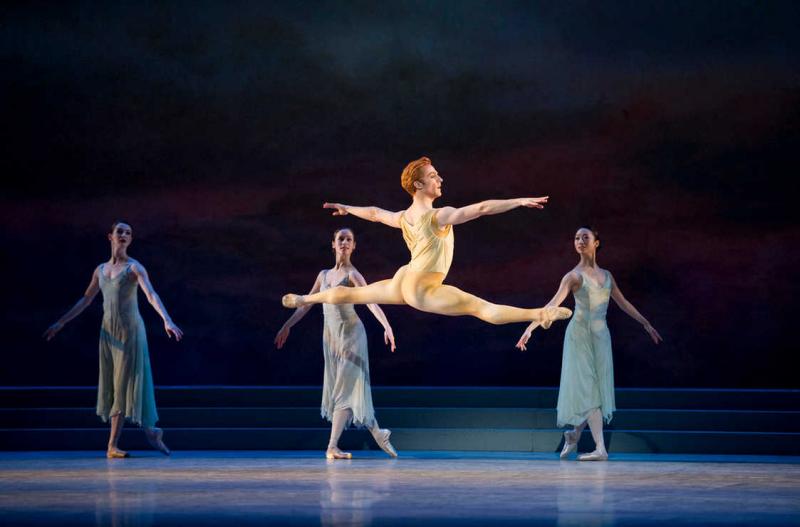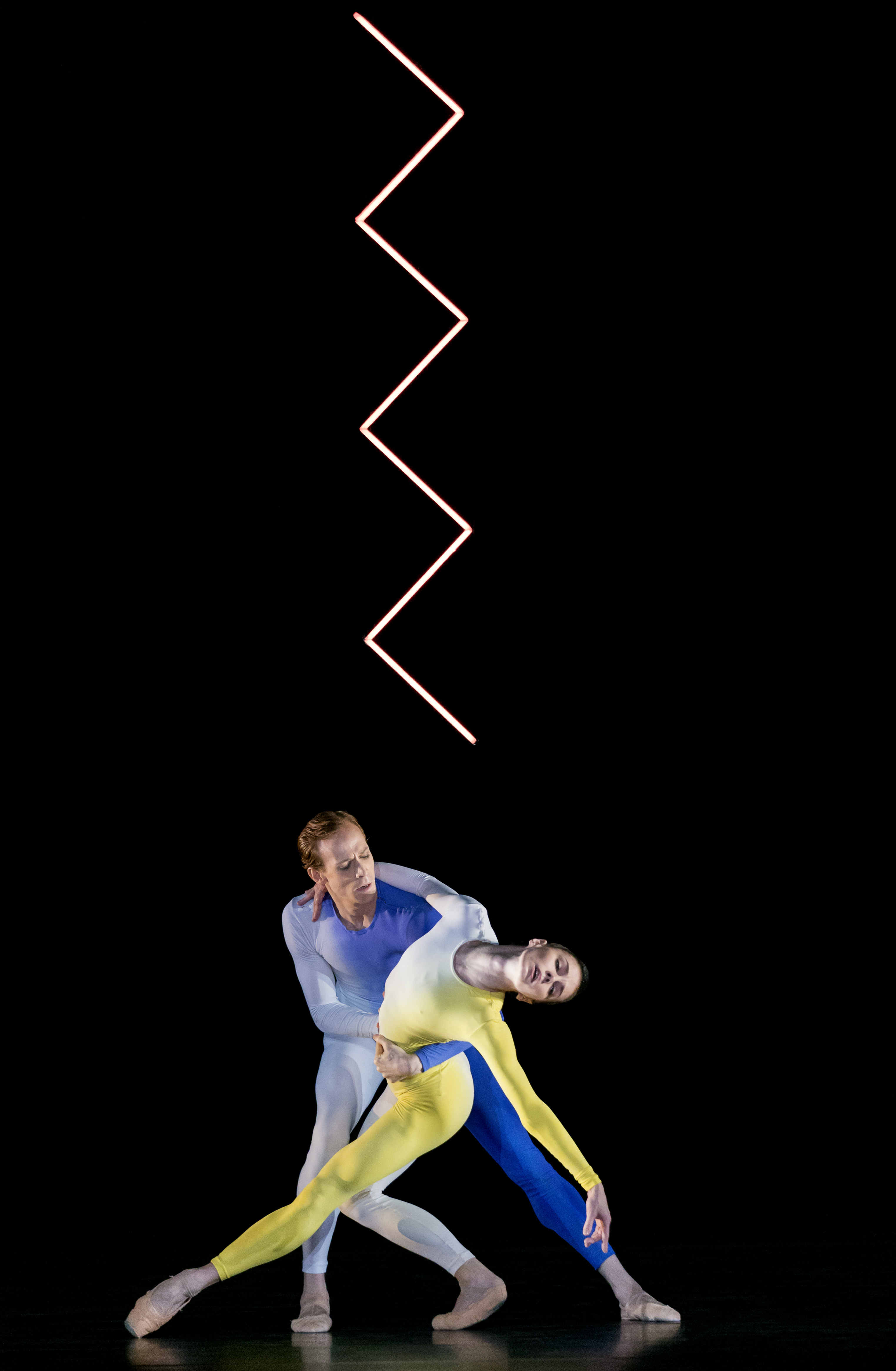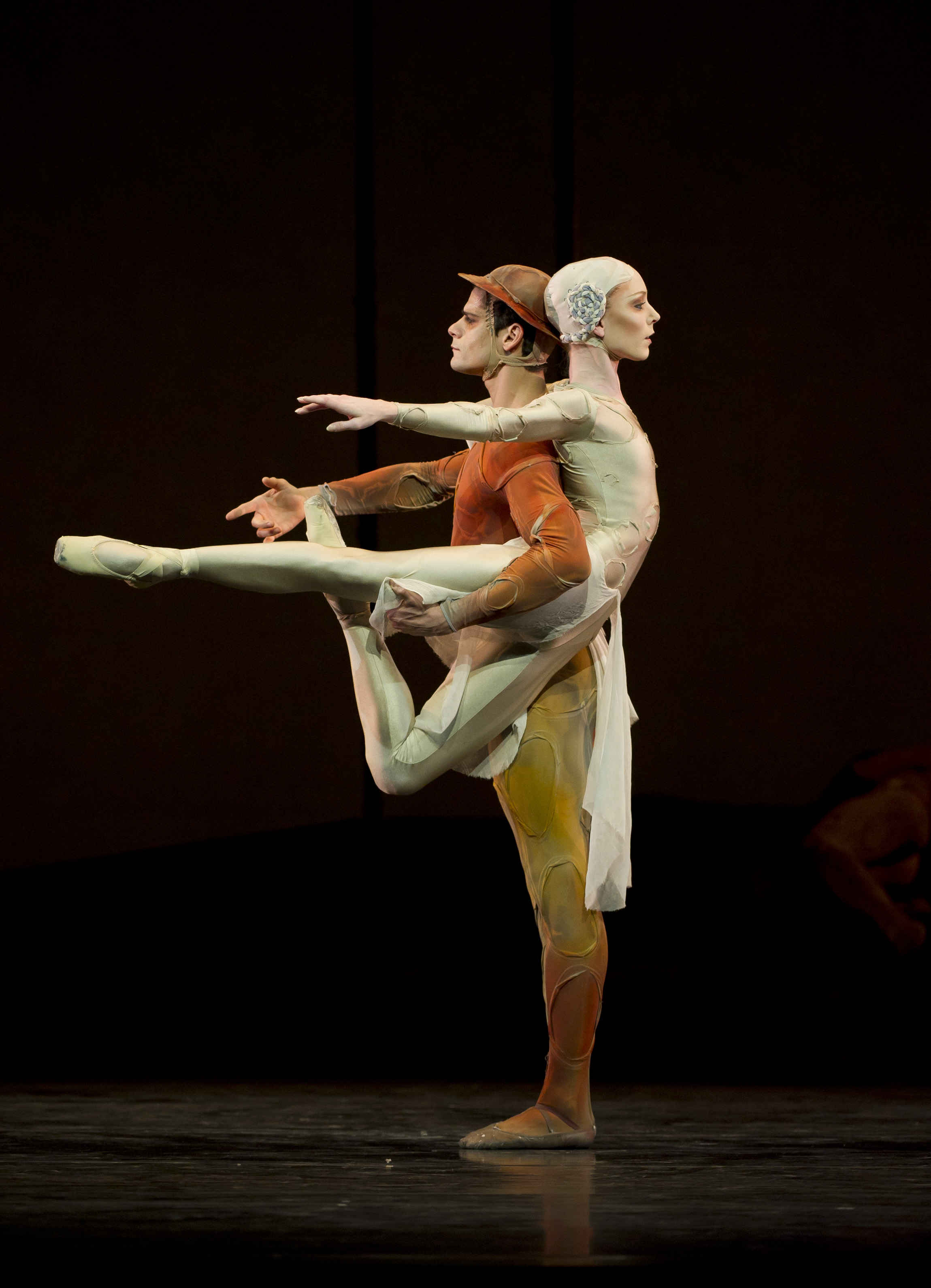Rhapsody/Tetractys/Gloria, The Royal Ballet | reviews, news & interviews
Rhapsody/Tetractys/Gloria, The Royal Ballet
Rhapsody/Tetractys/Gloria, The Royal Ballet
McGregor's too thinky, MacMillan too tame; Ashton and McRae are the name of the game

Is it odd that, in a bill containing an achingly contemporary première and a classic meditation on the First World War, a pastel-painted present for the Queen Mother’s birthday should race away with the honours?
Not if it was by Frederick Ashton, the Royal Ballet’s founder-choreographer. He’s been rather an undersung genius since his death, but maybe last night will tip the balance towards him again in the capacity crowd stakes, for his plotless Rhapsody (1980) was the standout piece in the Royal Ballet’s latest triple bill. Much of the credit goes to Steven McRae, who danced his heart out as the virtuoso male lead, giving us Baryshnikov-worthy split barrel turns (the kind of jump that provokes a visceral fear of broken ankles), insanely fast spinning chainés, and a crackingly Puckish smile, all responding to the percussive, Russian urgency given by Rachmaninov to the Paganini theme of his Rhapsody (the piano played by Robert Clark). To match McRae, we get the commanding Laura Morera, whose strong body the caprice theme ripples through, but never overpowers. Ashton’s constant changing of arm positions make the six supporting couples look more like twelve, as they beat their feet, and try to keep their arms Ashton-willowy at great speed (Elizabeth Harrod managed beautifully). It’s tremendous stuff from all concerned.
 The only surprise about the next piece, a collaboration between Wayne McGregor and visual artist Tauba Auerbach, is that it didn’t happen sooner. McGregor, known for his fascination with deconstructing both movement and the creative process, and Auerbach, equally interested in disrupting conventional constructions of visual meaning, clearly have a great deal to say to each other. Add JS Bach’s enigmatic last work, The Art of Fugue, into the mix, and there are - as always with McGregor - many levels on which the new work premièred last night, the unwieldily titled Tetractys - The Art of Fugue, could be fascinating.
The only surprise about the next piece, a collaboration between Wayne McGregor and visual artist Tauba Auerbach, is that it didn’t happen sooner. McGregor, known for his fascination with deconstructing both movement and the creative process, and Auerbach, equally interested in disrupting conventional constructions of visual meaning, clearly have a great deal to say to each other. Add JS Bach’s enigmatic last work, The Art of Fugue, into the mix, and there are - as always with McGregor - many levels on which the new work premièred last night, the unwieldily titled Tetractys - The Art of Fugue, could be fascinating.
Unfortunately, as with most of the new McGregor I’ve seen in the last couple of years, Tetractys was probably far more fascinating to make than it is to watch. On a mostly black stage, varying configurations of dancers duet, trio and sextet with each other, their patterning related to the complex geometry of the music. Behind and above and to the side, Auerbach’s striking light scuptures make line-based glyphs that are “scaled, sheered, inverted, expanded and ornamented” in accordance with the changes in the fugue subject over seven movements (Fugues 1, 4-6, 13-14; Canons 1 and 4). Changes in the colour of both glyphs and costumes (predictable primaries give way to honeycomb, custard, parma violet and azure) cipher changes in the music’s tonality and construction. Twelve dancers must twist and stretch themselves through McGregor’s kinetic choreography to bring this elaborate 3D fugue to life for 40 whole minutes (at least 10 too many in my book). Yes, it’s thoughtful and careful and must have been a hell of a lot of work. It’s just cold, cold, cold.
 You don’t put eight Royal Ballet principals on stage without getting some charisma, and so the best moments of Tetractys come courtesy of its stars: Ed Watson and Natalia Osipova (pictured above right) sinuous to the point of unsettling contortion; Thiago Soares and Eric Underwood holding Marianela Nuñez so that just one pointe shoe taps the ground – from above her head in a drastic fish dive; the chunky gravitational presence of Paul Kay unbalancing Sarah Lamb and Stephen McRae’s stark monochrome duet. But we’re missing the pulsing urgency of Chroma, the strange poignancy of Infra, or even the trust in Bach himself that would allow the music to draw us – helped by Auerbach’s hypnotic glyphs, which I did very much like – onto another plane.
You don’t put eight Royal Ballet principals on stage without getting some charisma, and so the best moments of Tetractys come courtesy of its stars: Ed Watson and Natalia Osipova (pictured above right) sinuous to the point of unsettling contortion; Thiago Soares and Eric Underwood holding Marianela Nuñez so that just one pointe shoe taps the ground – from above her head in a drastic fish dive; the chunky gravitational presence of Paul Kay unbalancing Sarah Lamb and Stephen McRae’s stark monochrome duet. But we’re missing the pulsing urgency of Chroma, the strange poignancy of Infra, or even the trust in Bach himself that would allow the music to draw us – helped by Auerbach’s hypnotic glyphs, which I did very much like – onto another plane.
Contrast then the third piece, Kenneth MacMillan’s Gloria (1980), which is painted in rich colours by Poulenc’s Gloria, (credit to conductor Barry Wordsworth, the rich and spiky Royal Opera Chorus, and soprano Dušica Bijelic). The dancing in this semi-abstract meditation on the trauma of the First World War is surprisingly peaceful for MacMillan, the master of character and psychological darkness. The most powerful figures are not, as in Mayerling or The Judas Tree, the name-able people contorted with real emotions, but white-clad anonymities with their backs turned, just sitting, staring into an abyss that we cannot see. Among the soloists, Thiago Soares (pictured above left, with Sarah Lamb) stands out for embodying nobility and anguish with just the abstraction needed to suggest the horror of the general sacrifice in which an entire generation was lost, and Meaghan Grace Hinkis caught my eye leading the pas de quatre. It is a strong ensemble cast, including Sarah Lamb and Carlos Acosta, as well as several promising young soloists - but this Ashton-McGregor-MacMillan journey has been a long one for both dancers and audience. No surprise then to feel a little muted at the end.
- The Royal Ballet's Rhapsody programme is at the Royal Opera House until 15 February
rating
Share this article
The future of Arts Journalism
You can stop theartsdesk.com closing!
We urgently need financing to survive. Our fundraising drive has thus far raised £33,000 but we need to reach £100,000 or we will be forced to close. Please contribute here: https://gofund.me/c3f6033d
And if you can forward this information to anyone who might assist, we’d be grateful.

Subscribe to theartsdesk.com
Thank you for continuing to read our work on theartsdesk.com. For unlimited access to every article in its entirety, including our archive of more than 15,000 pieces, we're asking for £5 per month or £40 per year. We feel it's a very good deal, and hope you do too.
To take a subscription now simply click here.
And if you're looking for that extra gift for a friend or family member, why not treat them to a theartsdesk.com gift subscription?
more Dance
 Help to give theartsdesk a future!
Support our GoFundMe appeal
Help to give theartsdesk a future!
Support our GoFundMe appeal
 The Forsythe Programme, English National Ballet review - brains, beauty and bravura
Once again the veteran choreographer and maverick William Forsythe raises ENB's game
The Forsythe Programme, English National Ballet review - brains, beauty and bravura
Once again the veteran choreographer and maverick William Forsythe raises ENB's game
 Sad Book, Hackney Empire review - What we feel, what we show, and the many ways we deal with sadness
A book about navigating grief feeds into unusual and compelling dance theatre
Sad Book, Hackney Empire review - What we feel, what we show, and the many ways we deal with sadness
A book about navigating grief feeds into unusual and compelling dance theatre
 Balanchine: Three Signature Works, Royal Ballet review - exuberant, joyful, exhilarating
A triumphant triple bill
Balanchine: Three Signature Works, Royal Ballet review - exuberant, joyful, exhilarating
A triumphant triple bill
 Romeo and Juliet, Royal Ballet review - Shakespeare without the words, with music to die for
Kenneth MacMillan's first and best-loved masterpiece turns 60
Romeo and Juliet, Royal Ballet review - Shakespeare without the words, with music to die for
Kenneth MacMillan's first and best-loved masterpiece turns 60
 Vollmond, Tanztheater Wuppertal Pina Bausch + Terrain Boris Charmatz, Sadler's Wells review - clunkily-named company shows its lighter side
A new generation of dancers brings zest, humour and playfulness to late Bausch
Vollmond, Tanztheater Wuppertal Pina Bausch + Terrain Boris Charmatz, Sadler's Wells review - clunkily-named company shows its lighter side
A new generation of dancers brings zest, humour and playfulness to late Bausch
 Phaedra + Minotaur, Royal Ballet and Opera, Linbury Theatre review - a double dose of Greek myth
Opera and dance companies share a theme in this terse but affecting double bill
Phaedra + Minotaur, Royal Ballet and Opera, Linbury Theatre review - a double dose of Greek myth
Opera and dance companies share a theme in this terse but affecting double bill
 Onegin, Royal Ballet review - a poignant lesson about the perils of youth
John Cranko was the greatest choreographer British ballet never had. His masterpiece is now 60 years old
Onegin, Royal Ballet review - a poignant lesson about the perils of youth
John Cranko was the greatest choreographer British ballet never had. His masterpiece is now 60 years old
 Northern Ballet: Three Short Ballets, Linbury Theatre review - thrilling dancing in a mix of styles
The Leeds-based company act as impressively as they dance
Northern Ballet: Three Short Ballets, Linbury Theatre review - thrilling dancing in a mix of styles
The Leeds-based company act as impressively as they dance
 Best of 2024: Dance
It was a year for visiting past glories, but not for new ones
Best of 2024: Dance
It was a year for visiting past glories, but not for new ones
 Nutcracker, English National Ballet, Coliseum review - Tchaikovsky and his sweet tooth rule supreme
New production's music, sweets, and hordes of exuberant children make this a hot ticket
Nutcracker, English National Ballet, Coliseum review - Tchaikovsky and his sweet tooth rule supreme
New production's music, sweets, and hordes of exuberant children make this a hot ticket

Add comment